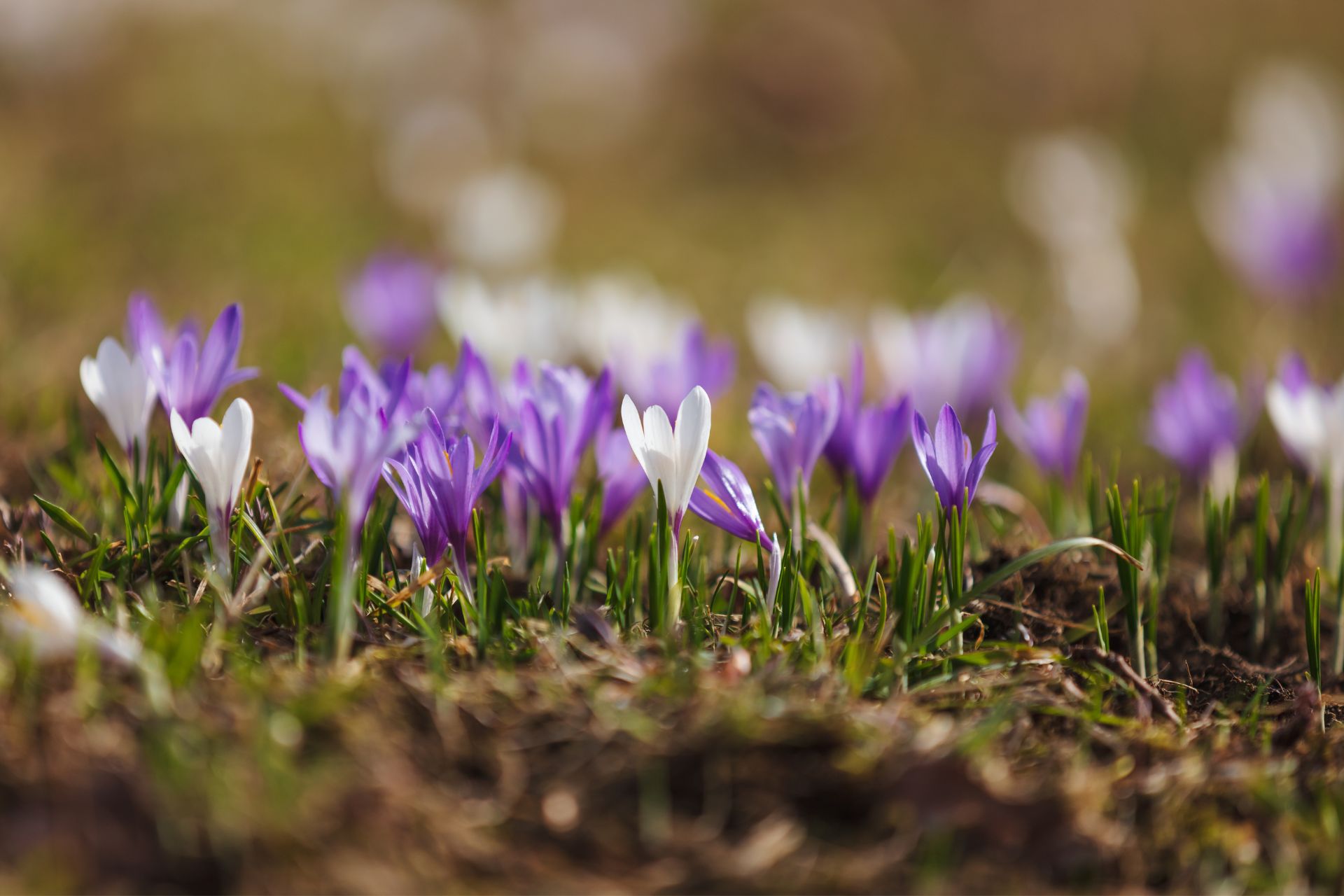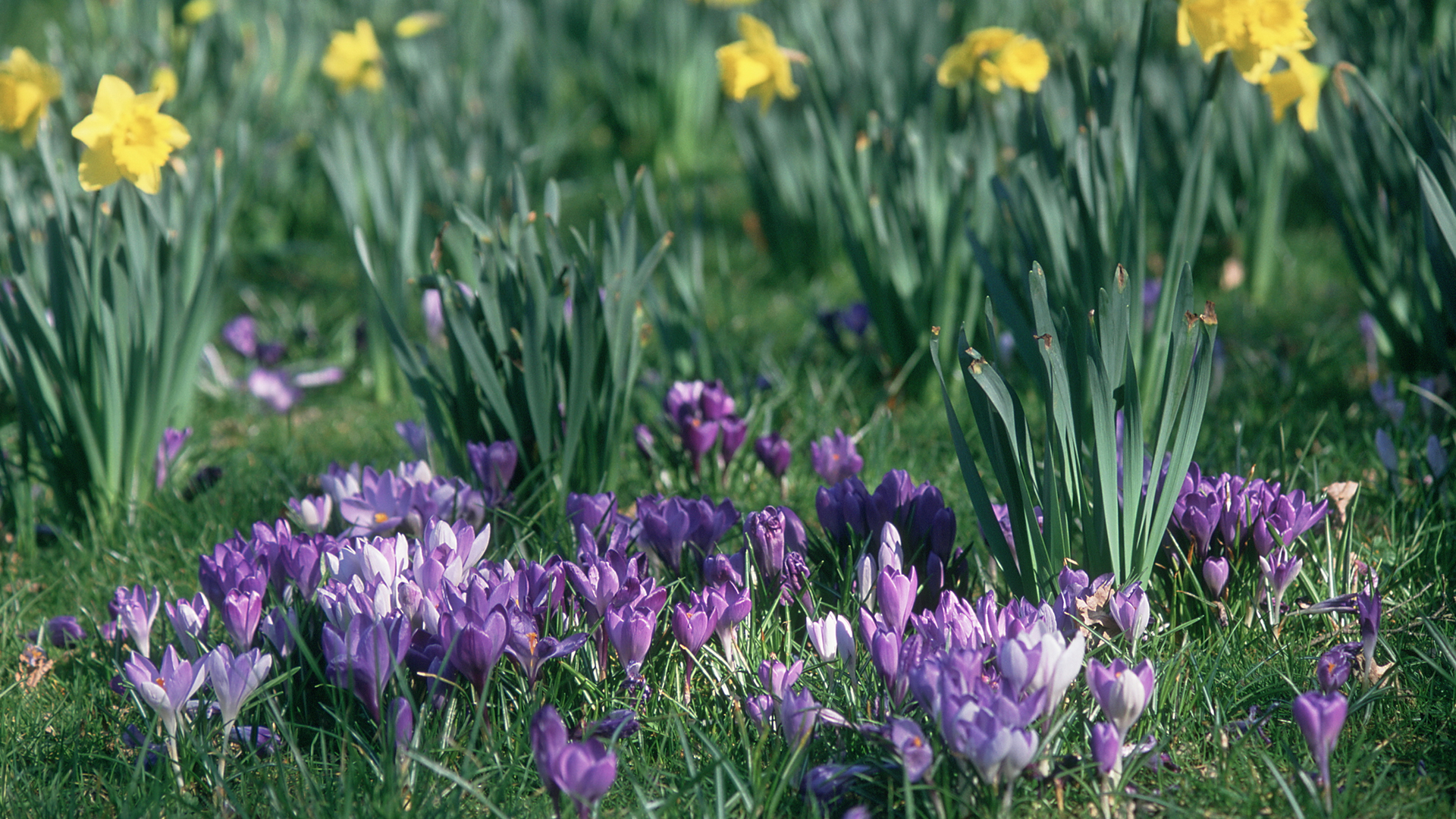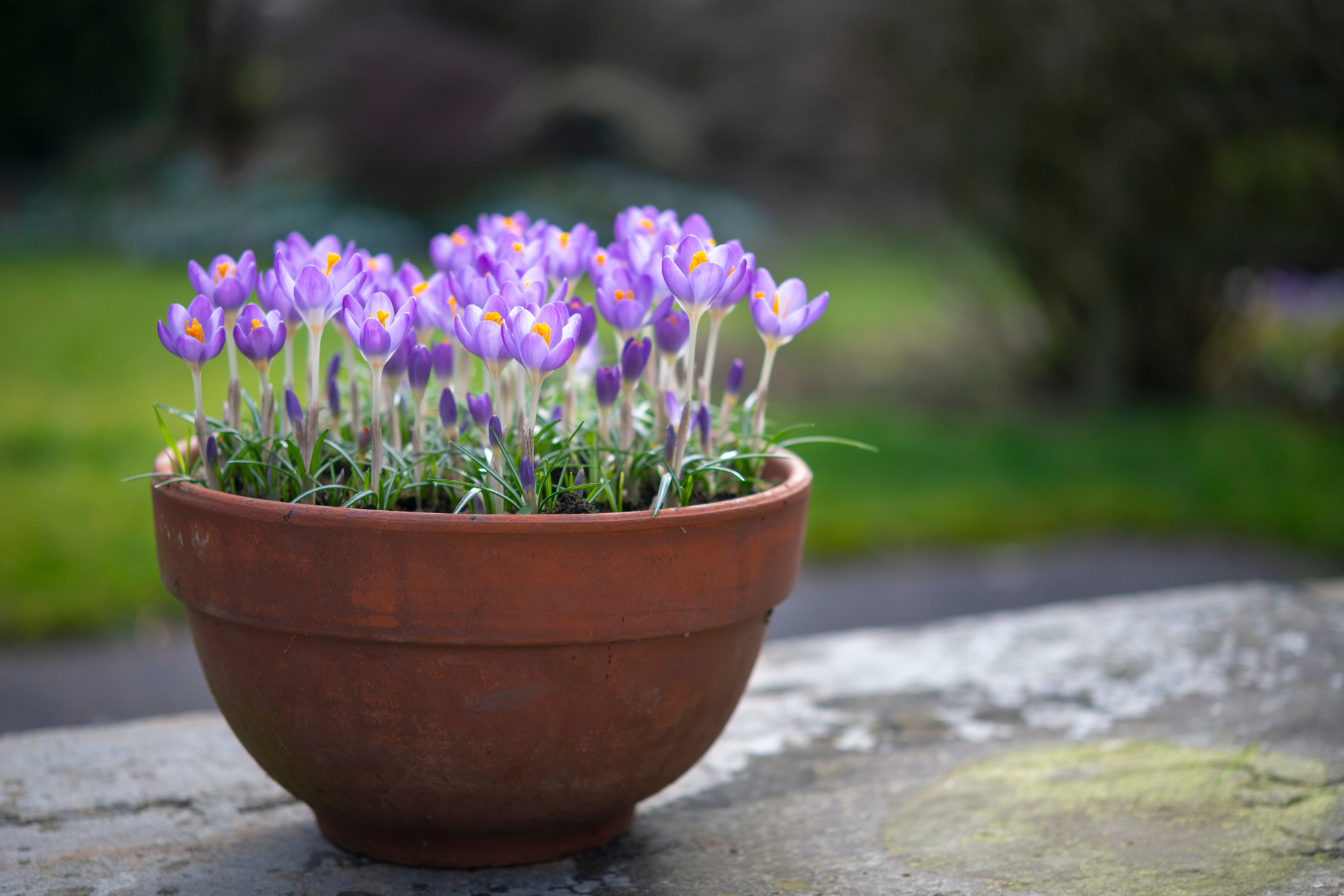
If you’ve been busily wondering what to do with crocuses after flowering, you’re not alone; these showy little flowers hold a special place in many people’s hearts thanks to their ability to add some serious colour to the bleak midwinter months.
Yes, when winter feels like it’s never going to end, we love that these spring bulbs work their magic and pop up with jewel-toned petals, practically demanding applause for that brave early bloom. Their display is usually over by the time spring begins in earnest, though, leaving many to wonder… well, now what?
Do you snip them back? Leave them alone? Dig them up? Or is this one of those “nature will sort itself out” situations? The good news is, that crocuses (like so many of our favourite garden trends) are delightfully low-maintenance.
Still, much as you need to lend a helping hand to snowdrops after flowering, there's no denying that a little bit of post-flowering TLC can make all the difference to their comeback potential...
What to do with crocuses after flowering: expert advice
It doesn't matter if you’re a seasoned gardener or just someone who accidentally planted crocus bulbs and now feels responsible for their well-being (we’ve all been there), it's important to figure out what to do once they've finished blooming.
Why? Because it takes very little effort to make sure that one of the most alluring plants to liven up your garden returns bigger, better, and even more vibrant next year.
"I absolutely love crocuses," says Christopher O'Donoghue, one of the co-directors at Gardens Revived. "They're reliable early performers, adding some much-needed colour to the world when the world outside is still pretty grey and miserable – and they need very little from us in return."

"It seems almost too good to be true that these goblet-shaped blooms are perennials, but they really will naturalise over time and pop back each February with gusto – making them an excellent investment for your garden!" he adds.
Essentially, then, you have a flower that will come back year after year (often without the faff that comes hand-in-hand with caring for tulips after flowering, too). That being said, though, there are a handful of things you can do to help your crocuses with this.
To that end, then, ensure you take note of the following tips and advice when deciding what to do with crocuses after flowering.
1. Let them die back naturally
“Once your crocuses have finished putting on their cheerful little show, it’s time to let them settle back for the year,” says Christopher, who insists you absolutely must fight the urge to tidy them up too soon.
"Those leaves might look a bit scruffy, but they’re doing an important job. Let them wither and die back naturally, feeding the bulbs beneath the soil so they’re ready to bloom again next spring."

Christopher adds that, if you crave a bit of order in your garden borders, you can deadhead the flowers as they fade, but only if you’re not keen on them self-seeding.
"Personally, I rather like letting them spread where they please it’s part of their cottage garden-esque charm!"
2. Give them a good feed
The next thing to do with crocuses after flowering is simple enough: give them a good feed. "A light feed with a general liquid fertiliser will give the bulbs an extra boost, especially if your soil isn’t particularly rich," says Christopher.
Do this every couple of weeks while the leaves are still green, using something like Miracle-Gro All Purpose Concentrated Liquid Plant Food from Amazon, then leave them be.
"Crocuses aren’t fussy plants, but they do appreciate a bit of kindness," adds Christopher.
3. Give them a lift
Just as you might do with bluebells after flowering, it might be a good idea in some cases to lift your crocus bulbs once the foliage has died back.
"If your garden tends to hold onto water, or you’ve noticed your crocuses aren’t coming back as strongly, you might want to lift the bulbs and store them somewhere cool and dry over summer, ready to replant in autumn," says Christopher.
That being said, this isn't an absolute must for everyone wondering what to do with crocuses after flowering. If they’re happy where they are, it’s best to just leave them in place and let nature do the work.
4. Avoid overwatering
You might think that good watering is key when determining what to do with crocuses after flowering, but you definitely want to avoid dousing these delicate little beauties.
"Crocuses prefer well-drained soil, so ensure they don’t sit in waterlogged conditions, especially in heavy clay soils," says Christopher.
Stay that watering can, then...
5. Give the lawn mower a break
Finally, it's the age-old question: how often should you mow your lawn? The answer is a resounding 'not at all' if your crocuses have just finished flowering.
"For those who grow crocuses in the lawn, patience is key. Hold off mowing until the leaves have properly withered," says Christopher.
Remember that, much like snowdrops, crocuses spread naturally through self-seeding, so the aim is to avoid disturbing them too much if you want them to work their magic.
"Yes, it’ll look a little wild for a few weeks, but it’s well worth it for that early burst of colour next spring," promises Christopher.
FAQs
Do you cut back crocus after flowering?
You should not cut back crocus after flowering; instead, you should let the leaves die back naturally, as they help the bulb store energy for next year’s growth.
"Avoid cutting them until they turn yellow and wither," says Christopher O'Donoghue of Gardens Revived.
It feels lazy, sure, but this hands-off approach really is the best way to ensure your crocuses store up all the nutrients they need for their big comeback next year!
What to do with crocus when finished flowering?
Once your crocuses have finished flowering, it's important to let them die back naturally. Once this is done, you can – if your crocuses are overcrowded or in poorly draining soil, that is – lift the bulbs once the foliage has died back.
"Clean and dry them, then store them in a cool, dry place until autumn replanting," says Christopher O'Donoghue of Gardens Revived.
Alternatively, you can leave your crocus bulbs well alone on a lawn or border and let them naturalise; they should return year after year without intervention. Just avoid mowing until the leaves have fully died back.
Do you need to deadhead crocus?
You don't need to deadhead crocus, as the flowers will fade naturally. If you prefer things a little tidier (and you don’t want them to self-seed), however, you can remove spent flowers as needed.
Now that you know what to do with crocuses after flowering, all that's left to do is... well, pour yourself a mug of something warm, settle back, and enjoy their showy display until it's well and truly bloomed its last. Enjoy.







